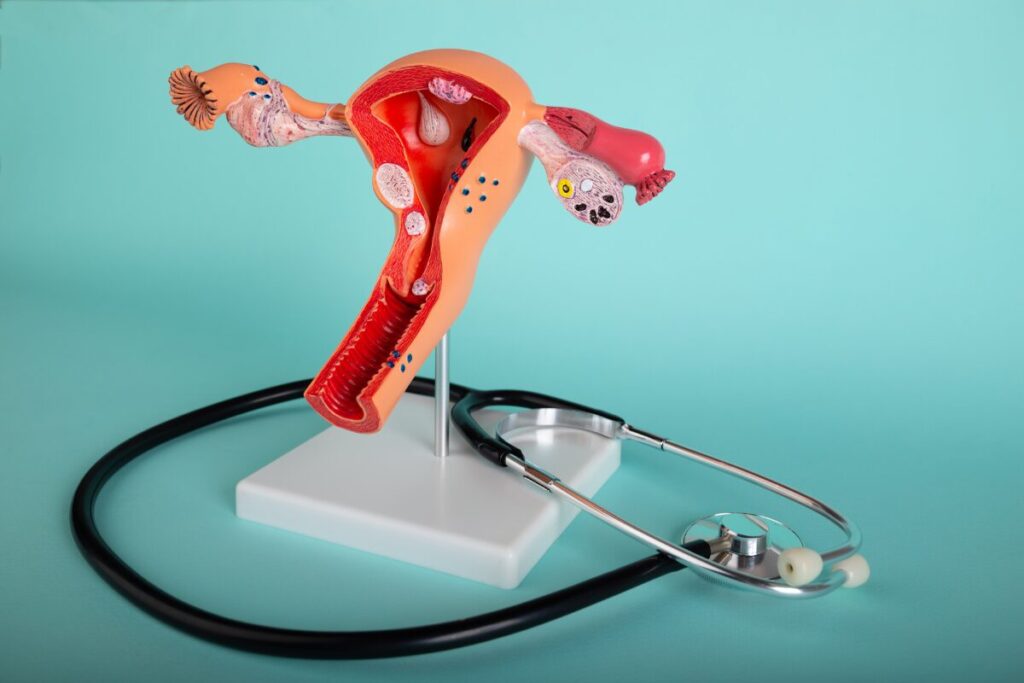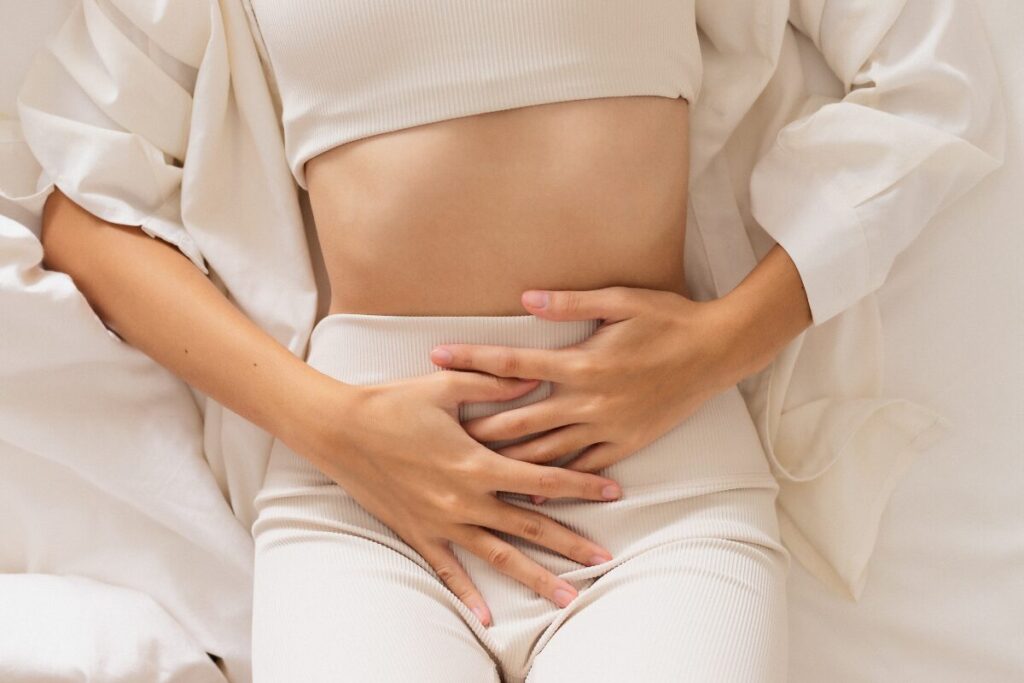Endometriosis treatment goes far beyond managing painful periods—this chronic, often misunderstood condition affects around 10% of women of reproductive age worldwide. For many, especially women over 40, it brings years of unanswered questions, relentless symptoms, and a search for lasting relief. Whether you’ve been newly diagnosed, suspect you may have endometriosis, or are supporting someone who is, you’re not alone. Understanding your options is a powerful first step in reclaiming your health.
While surgery and medications are commonly used in endometriosis treatment, more and more research highlights the powerful role nutrition and lifestyle can play in managing endometriosis symptoms. From reducing inflammation to balancing hormones naturally, targeted changes in your daily routine can significantly improve how you feel. While there’s no one-size-fits-all “endometriosis diet” there are proven strategies that support healing from the inside out.
In this post, we’ll explore what endometriosis is, how it affects your body, and the best foods for managing endometriosis pain naturally. Whether you’re dealing with chronic pelvic pain, trying to boost fertility, or simply want to feel better every day, this guide will provide practical, compassionate, and evidence-based tips.

What is Endometriosis?
Endometriosis is a chronic and often painful condition in which tissue similar to the uterine lining—called the endometrium—grows outside of the uterus. This tissue can attach to the ovaries, fallopian tubes, the outer surface of the uterus, and even surrounding pelvic organs. Though it’s located outside the uterus, the tissue still behaves as if it were inside: it thickens, breaks down, and bleeds with each menstrual cycle.
The issue? This displaced tissue has nowhere to go. Over time, it can lead to internal inflammation, scarring, and adhesions—bands of fibrous tissue that may cause pelvic organs to stick together. This cascade of dysfunction often results in chronic pelvic pain, bloating, fatigue, hormonal disruption, and even fertility issues. For many women, especially those in their 40s navigating hormonal shifts or perimenopause, these symptoms can feel overwhelming and isolating.
Understanding how endometriosis impacts your body is the first step in finding the right endometriosis treatment—and for many, a combination of medical support and lifestyle changes offers the most relief. Fortunately, food and nutrition play a powerful role in managing endometriosis symptoms, especially when it comes to reducing inflammation and improving day-to-day comfort.
Why the Connection Between Nutrition and Symptoms Matters
Endometriosis often requires a combination of medical treatments such as hormonal therapy, pain management, and sometimes surgery. However, what’s frequently overlooked is how much lifestyle factors, including nutrition, can influence symptoms.
Because endometriosis is both estrogen-dependent and inflammatory, diet can play a key role in helping to regulate hormone levels and reduce inflammation throughout the body. Anti-inflammatory foods like leafy greens, wild-caught salmon, flaxseeds, turmeric, and deeply colored berries are often recommended to help ease symptoms naturally.
“While there’s no cure for endometriosis, nutrition and lifestyle changes can dramatically reduce symptoms and improve daily life.” – Cleveland Clinic
Think of nutrition not as a standalone solution but as a supportive pillar in managing your symptoms. With the right dietary changes, many people find they experience fewer flare-ups, better energy, and a greater sense of control over their condition.
Understanding Endometriosis Symptoms
Endometriosis doesn’t show up the same way for every woman—which is one reason it’s so difficult to diagnose.
“Endometriosis affects an estimated 1 in 10 women worldwide, yet it can take up to 7–10 years to receive a proper diagnosis.” – The World Health Organization
Symptoms vary not only in intensity but also in location, and in many cases, they may not seem tied to reproductive health at all. For women in their 40s, it’s common to dismiss these signs as part of perimenopause or hormonal changes, which can delay effective endometriosis treatment.
Common Signs and Experiences
Some of the most frequently reported symptoms of endometriosis include:
- Chronic pelvic pain, especially before or during menstruation
- Pain during or after intercourse
- Heavy, painful, or irregular periods
- Painful bowel movements or urination—especially during menstruation
- Digestive issues like bloating, nausea, constipation, or diarrhea
- Fatigue and low energy levels
- Difficulty conceiving or infertility
These symptoms can interfere with every part of life—making work, relationships, and even basic self-care feel overwhelming. For many, especially those who’ve been struggling with managing endometriosis symptoms for years without answers, the emotional toll is just as real as the physical discomfort.
According to the World Health Organization, endometriosis can begin with your first period and persist through menopause. That means the earlier you understand your body—and how lifestyle and nutrition impact symptoms—the better your chances of finding lasting relief.
Next, we’ll explore how dietary choices can become a powerful part of your endometriosis treatment plan, including the best foods for managing endometriosis pain naturally.
How Endometriosis Impacts Daily Life
It’s not just a bad period. For many women, especially those in their 40s juggling work, family, and hormonal shifts, the chronic and unpredictable nature of endometriosis can make everyday life feel exhausting. Plans get canceled, social events are missed, and the pain—often invisible to others—becomes something you just “push through.” This disconnect can leave you feeling misunderstood, isolated, or even dismissed by healthcare providers or loved ones.
But managing endometriosis symptoms isn’t only about reducing physical discomfort—it’s also about honoring your emotional well-being. Chronic pelvic pain, fatigue, and hormonal imbalances can affect your mood, sleep quality, stress levels, and confidence. That’s why true endometriosis treatment must address the whole person: body, mind, and spirit.
From creating supportive routines to exploring the best foods for managing endometriosis pain, a well-rounded, lifestyle-based approach can bring real, lasting relief—and help you reclaim your day-to-day life with more energy and ease.
Ready to Feel More in Control of Your Endometriosis Journey?
If you’re tired of feeling like you just have to “push through” the pain, you’re not alone—and you don’t have to navigate this alone either. Functional medicine offers a personalized, root-cause approach to managing endometriosis so you can finally feel heard, supported, and empowered in your care.
👉 Explore our Hormone Health Services here to learn how we can support your healing.
✨ Book a free discovery call with Cindy to explore your next steps toward feeling like yourself again.
Follow Along in Our Endometriosis Series
This is just the beginning. In our upcoming posts, we’ll dive deeper into:
- The role of inflammation in endometriosis
- Nutrition strategies to help reduce pain and support healing
- Powerful lifestyle tools for symptom management
- And more ways to support your hormones and overall wellness
Be sure to follow us so you don’t miss the next part of this series—your body (and your peace of mind) deserve it.
Follow our Facebook
Sign up for our Newsletter and stay up to date on our newest blogs, latest tips and exclusive deals!
References
1. World Health Organization. (n.d.). Endometriosis. World Health Organization. https://www.who.int/news-room/fact-sheets/detail/endometriosis#:~:text=Overview,period%20and%20last%20until%20menopause.
2. Mayo Foundation for Medical Education and Research. (2024a, August 30). Endometriosis. Mayo Clinic. https://www.mayoclinic.org/diseases-conditions/endometriosis/symptoms-causes/syc-20354656
3. “Diet and Lifestyle.” The Endo Foundation, www.theendometriosisfoundation.org/diet-and-lifestyle. Accessed 22 Apr. 2025.
4. Tsamantioti, E. S. (2023, January 23). Endometriosis. StatPearls [Internet]. https://www.ncbi.nlm.nih.gov/books/NBK567777/
5. Cleveland Clinic. (2023). Endometriosis: Symptoms, Causes, and Treatment. Retrieved from https://my.clevelandclinic.org/health/diseases/9161-endometriosis
